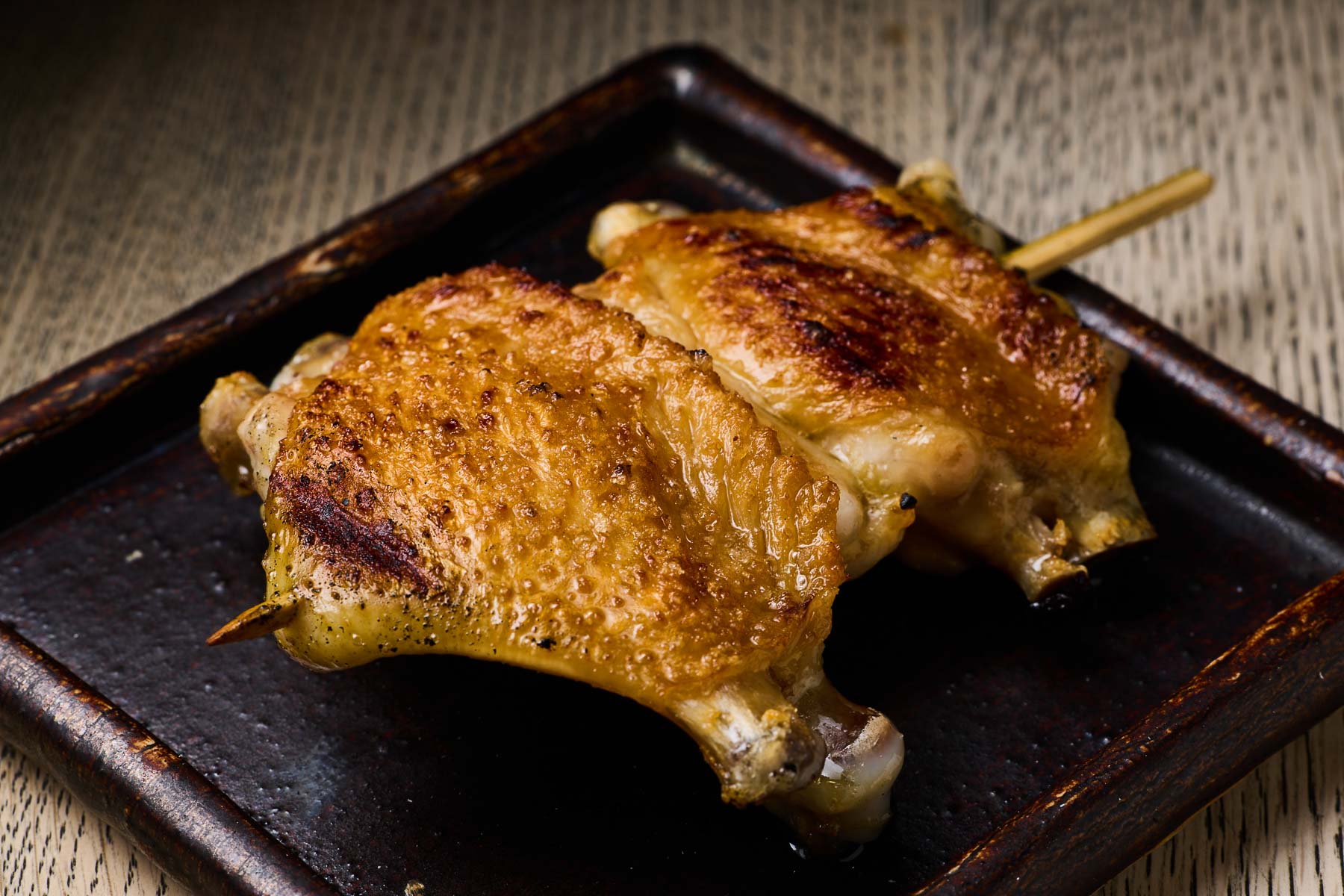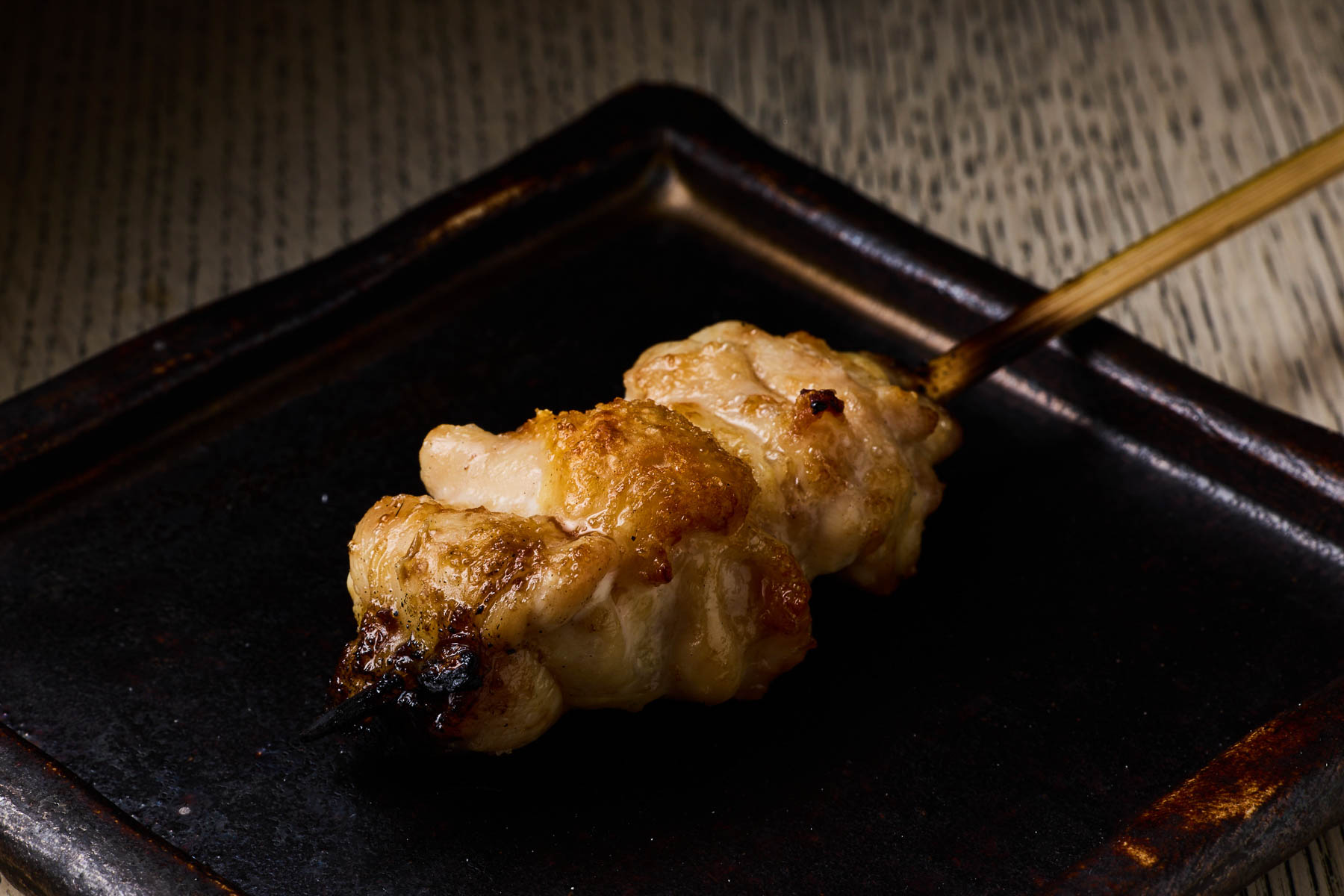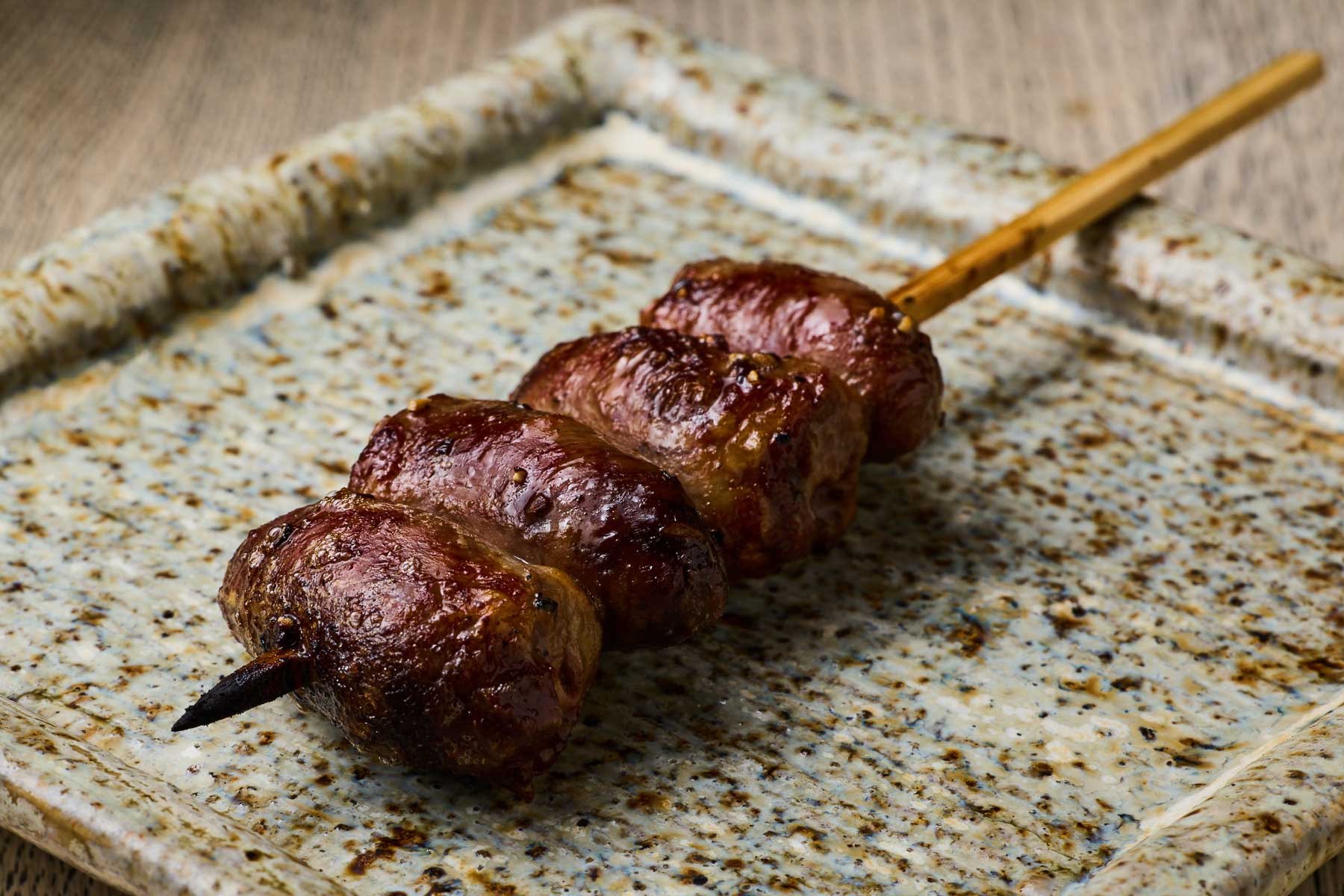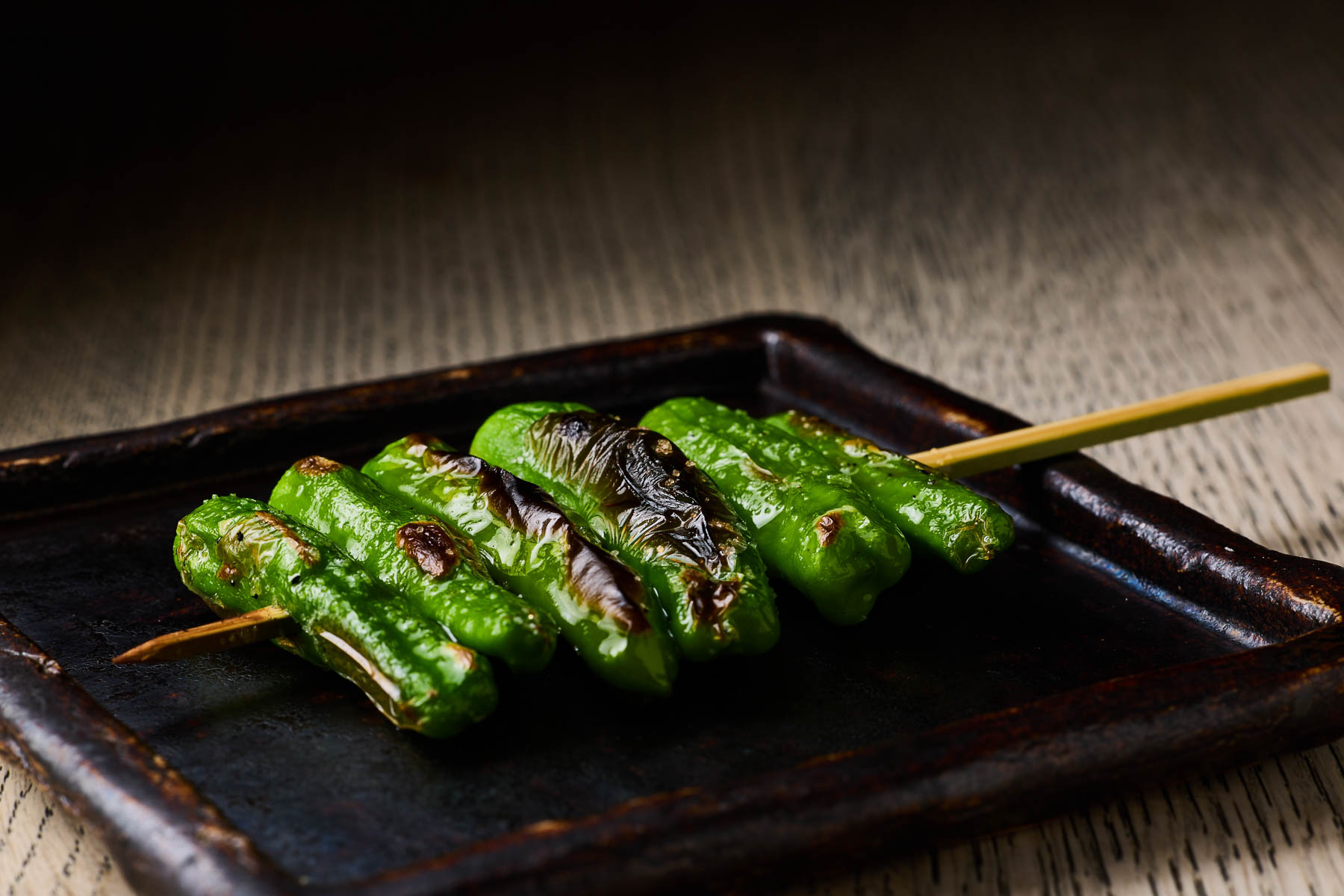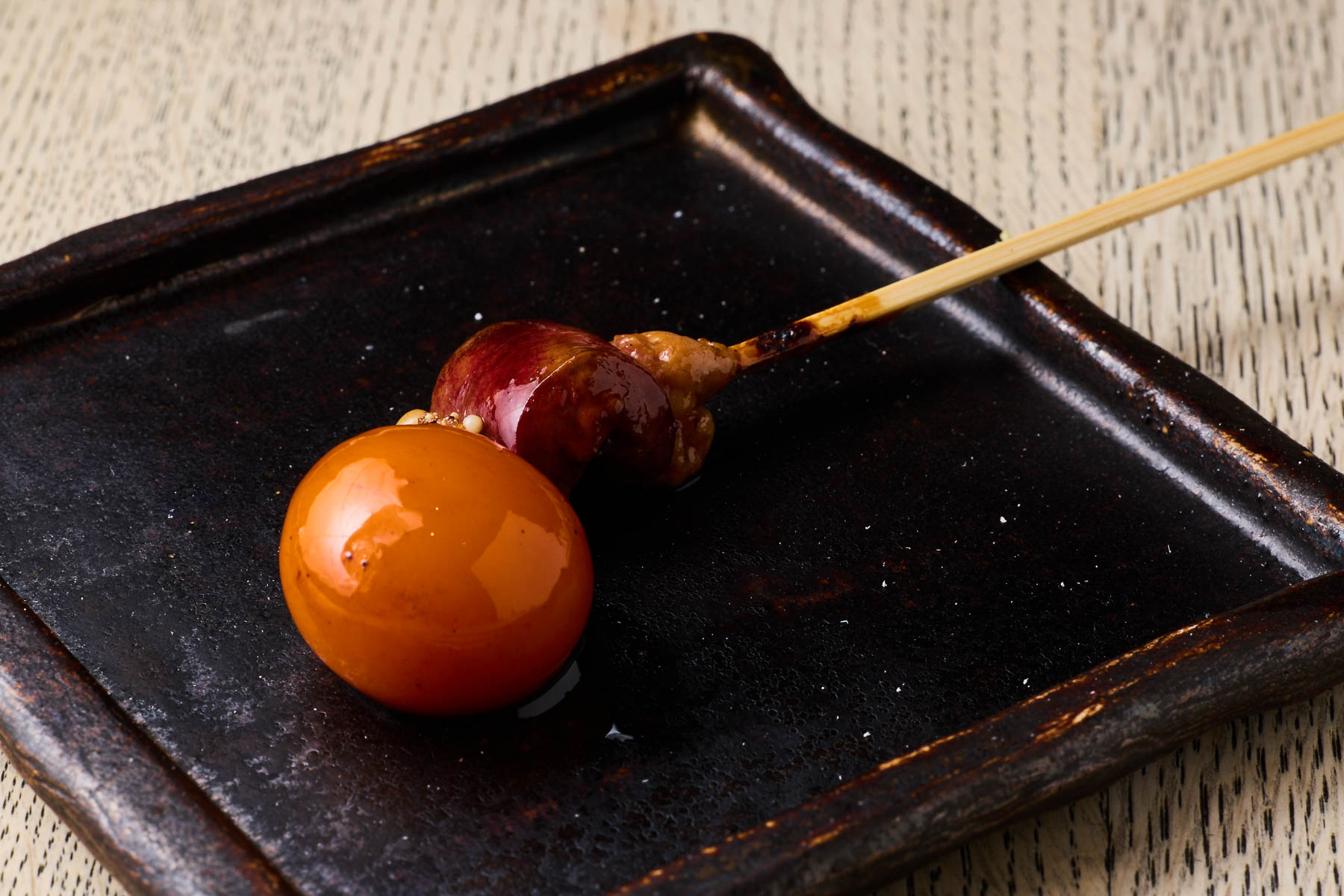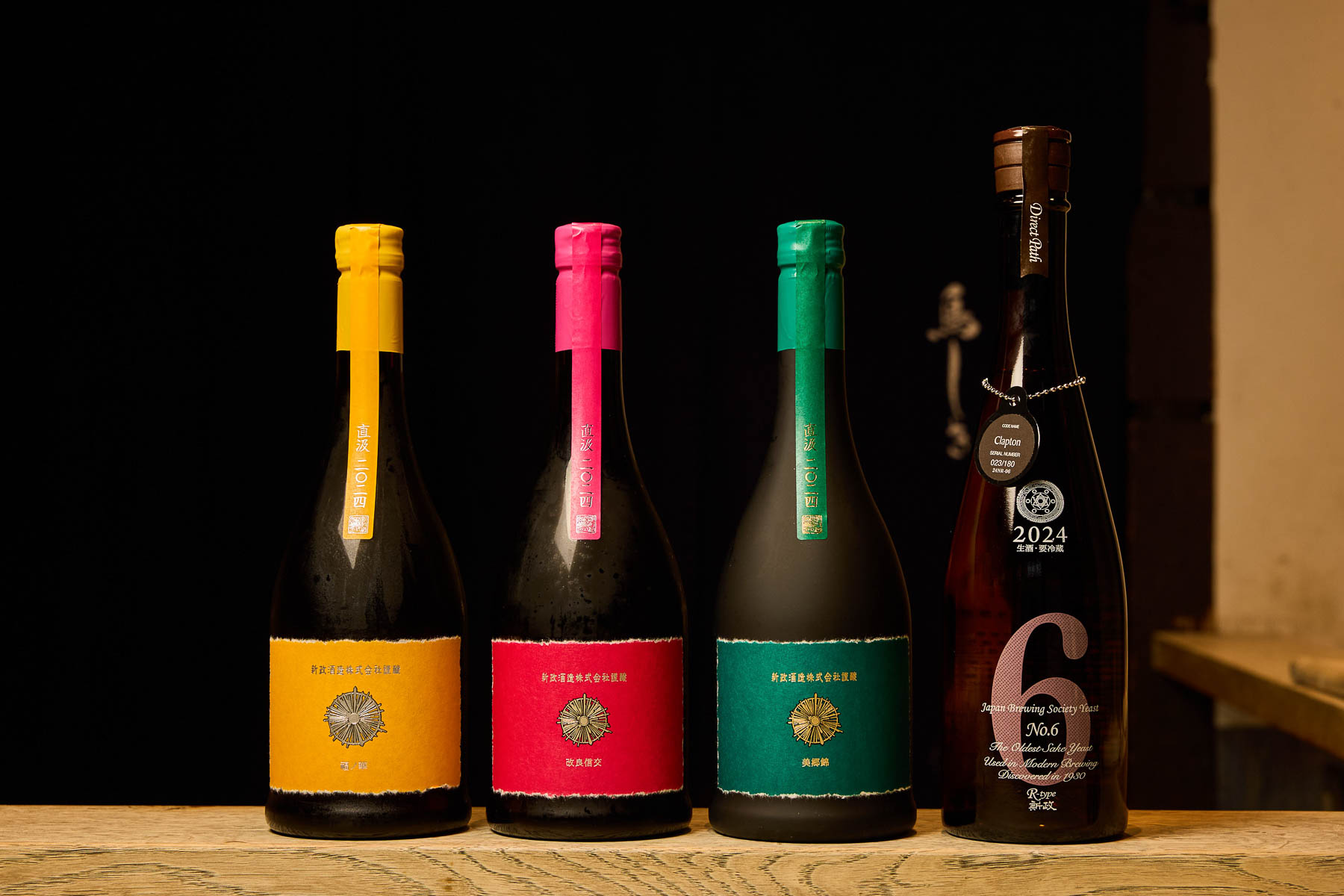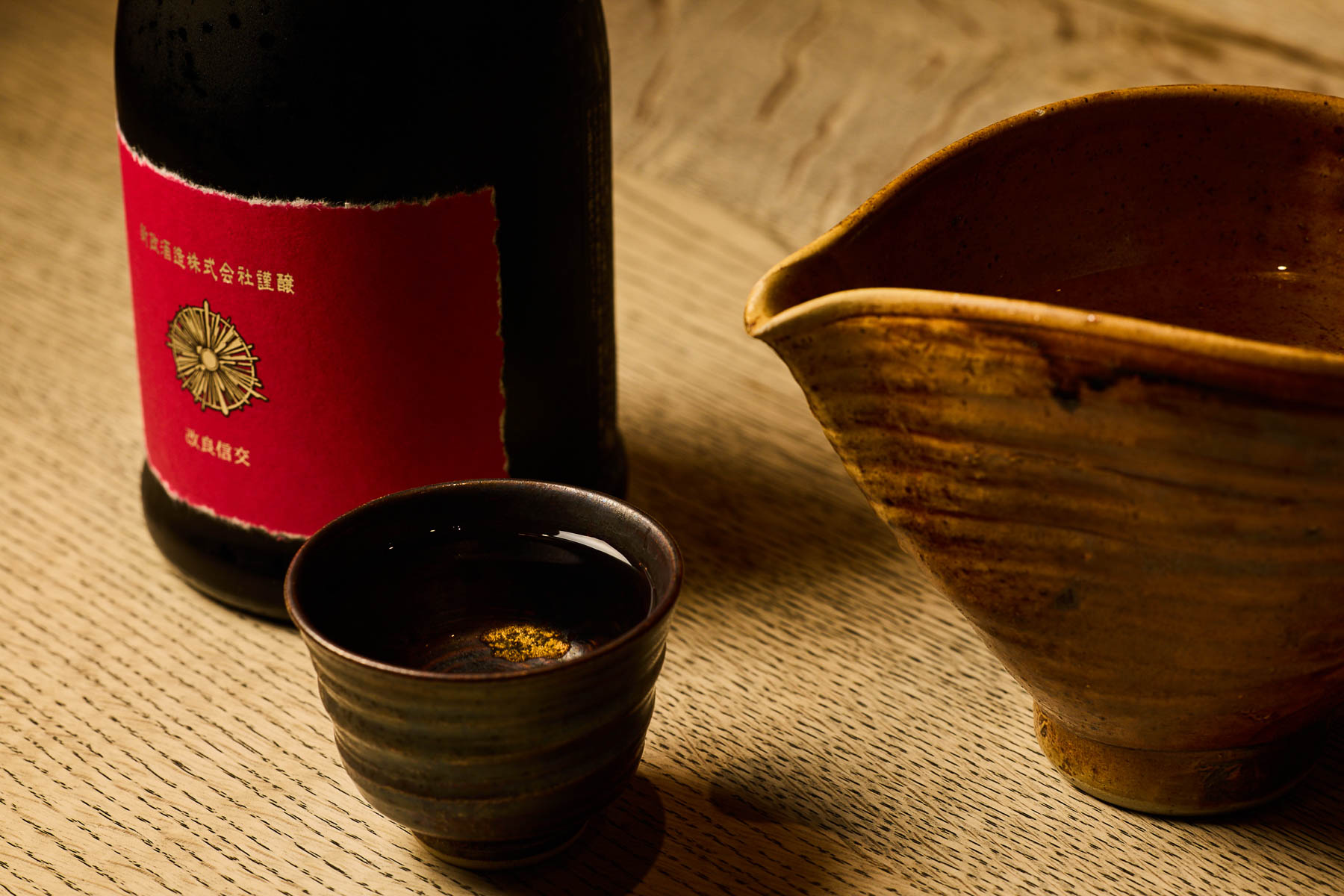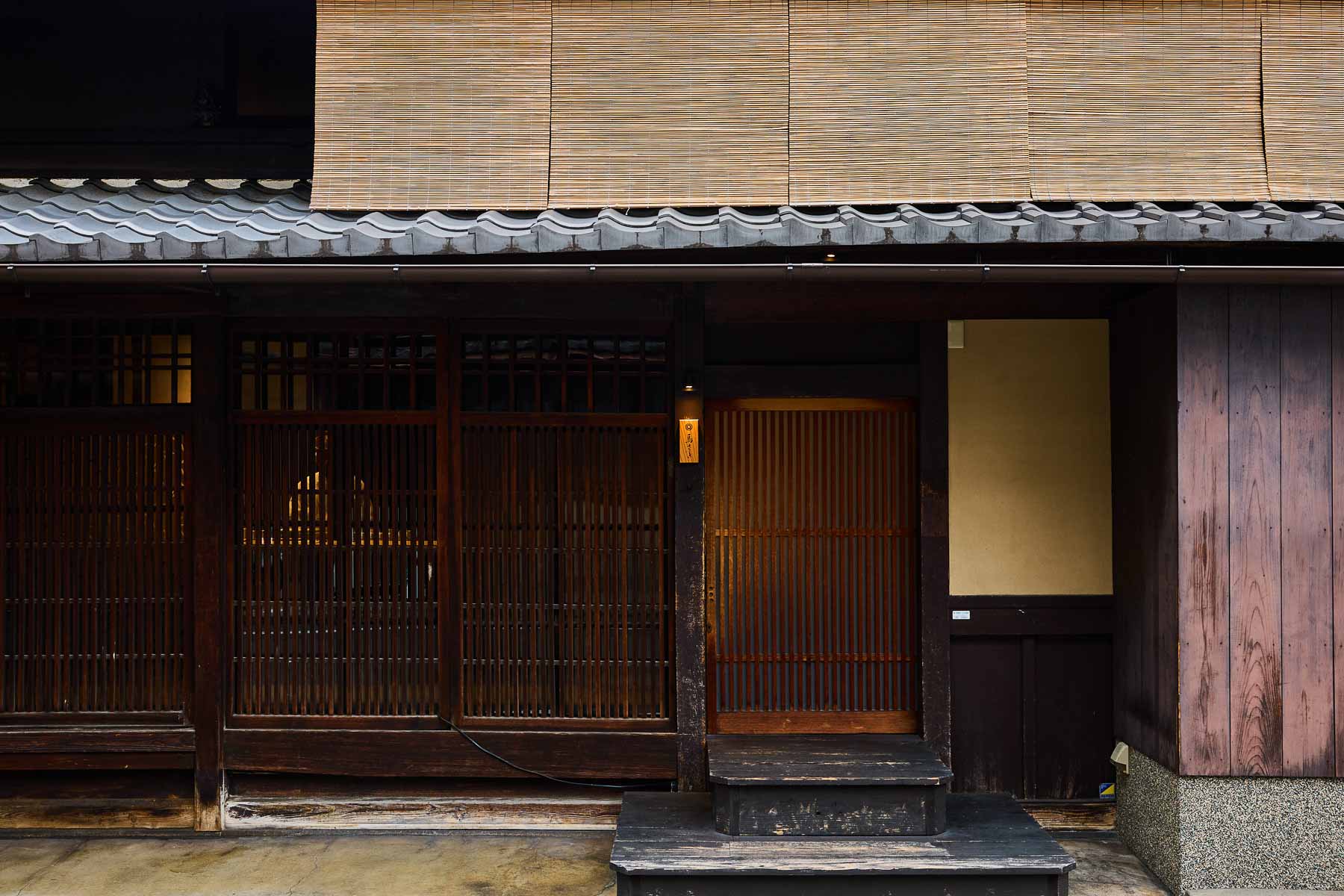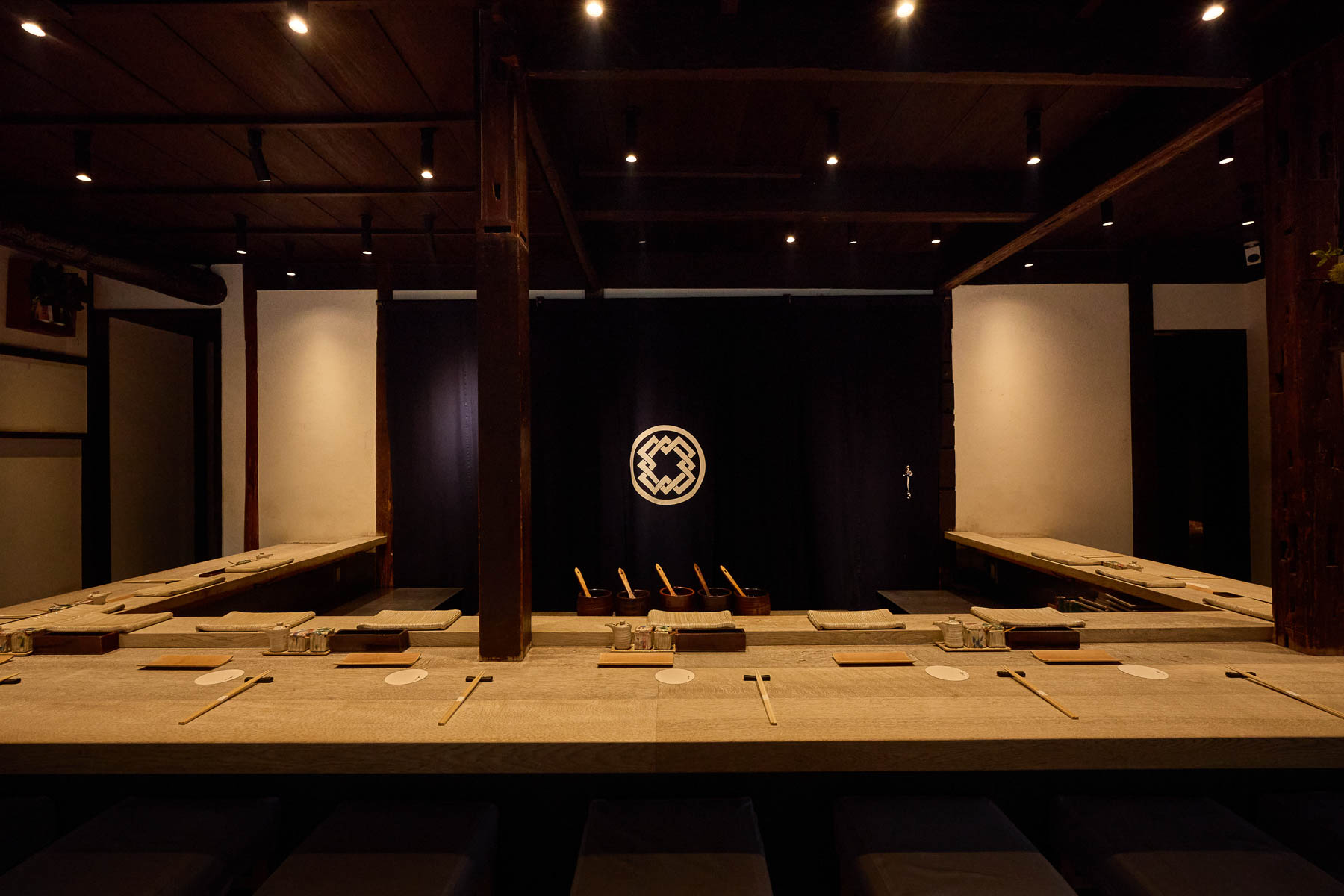
Kyoto
Torisaki
鳥さき
In a quiet Kyoto alley where time seems to slow, the scent of charcoal and soy drifts through the air. Inside a 200-year-old townhouse, guests gather around a narrow counter as Chef
Tomoki Hata carefully tends the grill. This is Torisaki, the renowned yakitori restaurant where traditions of Tokyoʼs award-winning Torishiki meet the sensibility of Kyoto cuisine.
Opened in 2019 in Karasuma-Oike, Torisaki occupies an old townhouse once used as a textile workshop. The wide building stretches along the street; its tasteful entrance marked by a
lattice façade of dark wood and woven reed shades. Inside, the light is dim and warm, falling over a pale-wood counter that curves towards a small garden. Behind the counter hangs a deep blue noren curtain embroidered with the restaurantʼs crest. The name Torisaki borrows its letters from Torishiki, where Hata trained, and his wife, Saki.
CUISINE
The Soul of Torishiki, Refined in Kyoto
Dinner here unfolds as a single omakase course, with all guests beginning the meal together. Each skewer is grilled with Hataʼs practiced precision, bringing out the flavor of each ingredient. The meat is cooked over select Kishu Binchotan charcoal, valued for its clean, even heat. Hata layers the coals and hammers them flat until they glow like cast iron, then brushes each skewer with the proper seasoning. The base sauce, passed down from Torishiki, is a simple mix of soy sauce, mirin and sugar, deepened over years of use.
Dinner here unfolds as a single omakase course, with all guests beginning the meal together. Each skewer is grilled with Hataʼs practiced precision, bringing out the flavor of each ingredient. The meat is cooked over select Kishu Binchotan charcoal, valued for its clean, even heat. Hata layers the coals and hammers them flat until they glow like cast iron, then brushes each skewer with the proper seasoning. The base sauce, passed down from Torishiki, is a simple mix of soy sauce, mirin and sugar, deepened over years of use.
The opening skewer is kashiwa, or thighs, lightly glazed and sliced thin so the flavor unfolds in a single bite. The local Tamba Kurodori chicken wings are succulent and satisfying, served in a generous portion. Served in the same style as Torishiki, the kata, or shoulder, is firm and hearty. The heart offers bold umami under a thin lacquer of sauce. The shishito pepper is brushed with rendered chicken fat and sprinkled with salt.
The chochin, or lantern, is a Torisaki signature. The egg-yolk sac is so delicate that it must be turned over the grill with breathlike precision. When ready, the chef holds the glowing skewers with both his hands and passes one to each guest.
For the rice dish, guests choose between oyakodon, the familiar comfort of chicken and egg over rice, or a minced chicken rice bowl, made by grinding grilled meatballs to retain the smokiness of the charcoal. The meal concludes with seasonal vegetables and a light dessert that cools the lingering warmth of the grill.
INGREDIENTS
At the heart of Torisakiʼs cuisine is premium Date chicken from Fukushima, the same breed used at Tokyoʼs Torishiki and known for its clean flavor. Depending on the season, he brings
in other breeds from Kyoto and Tottori, selecting them for texture and balance of flavor.
Kyotoʼs tofu culture finds its way onto the menu through the atsuage, or deep-fried tofu, made to order by Namikawa Shoten. Each block grills evenly crisp on the surface, soft within. The rice is Koshihikari grains from Uonuma in Niigata, polished to a gentle sheen. Vegetables follow the seasons with corn from Nagano in summer, ginkgo nuts and eggplant in the fall. Each ingredient is chosen for how it naturally fits into the dayʼs meal.
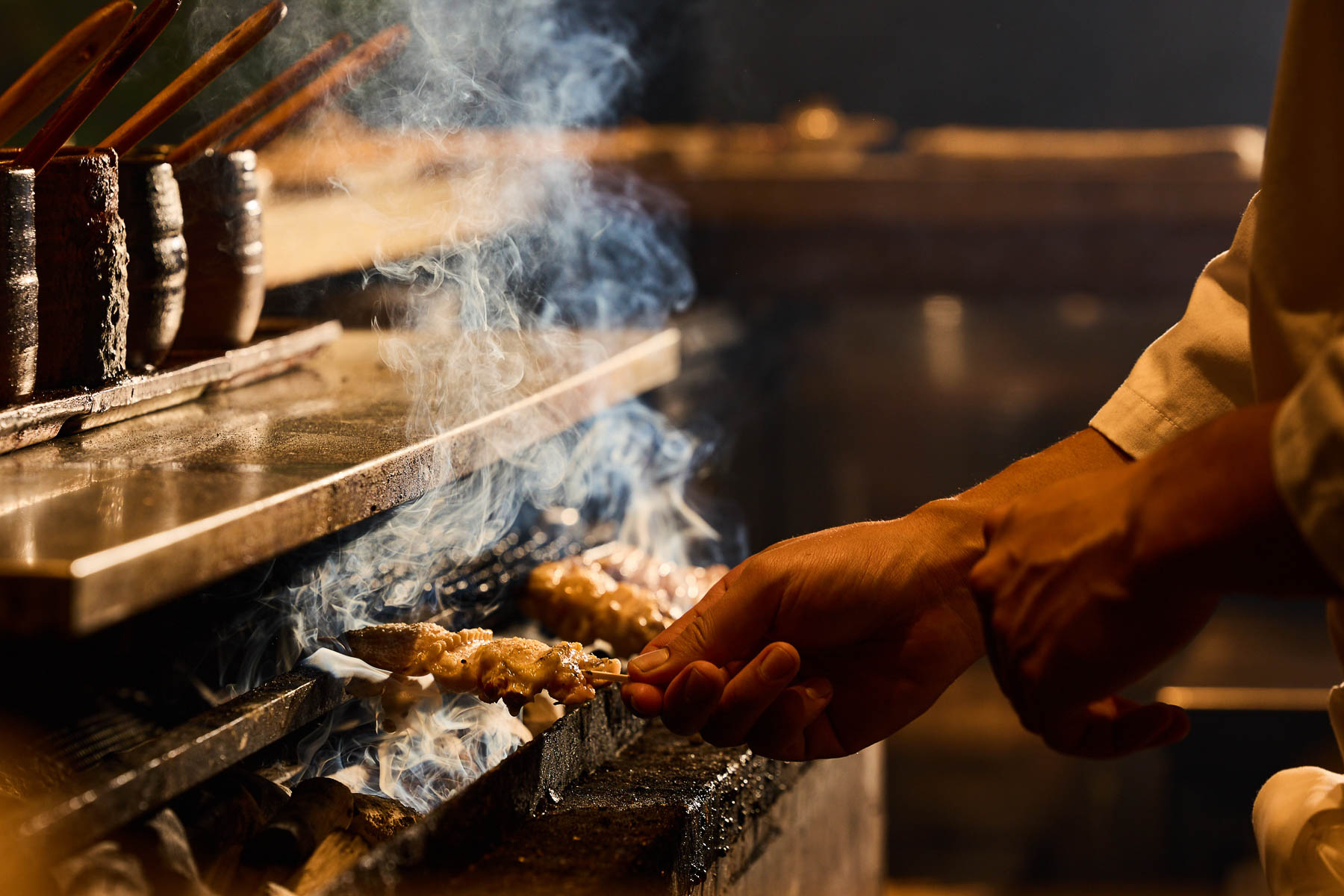
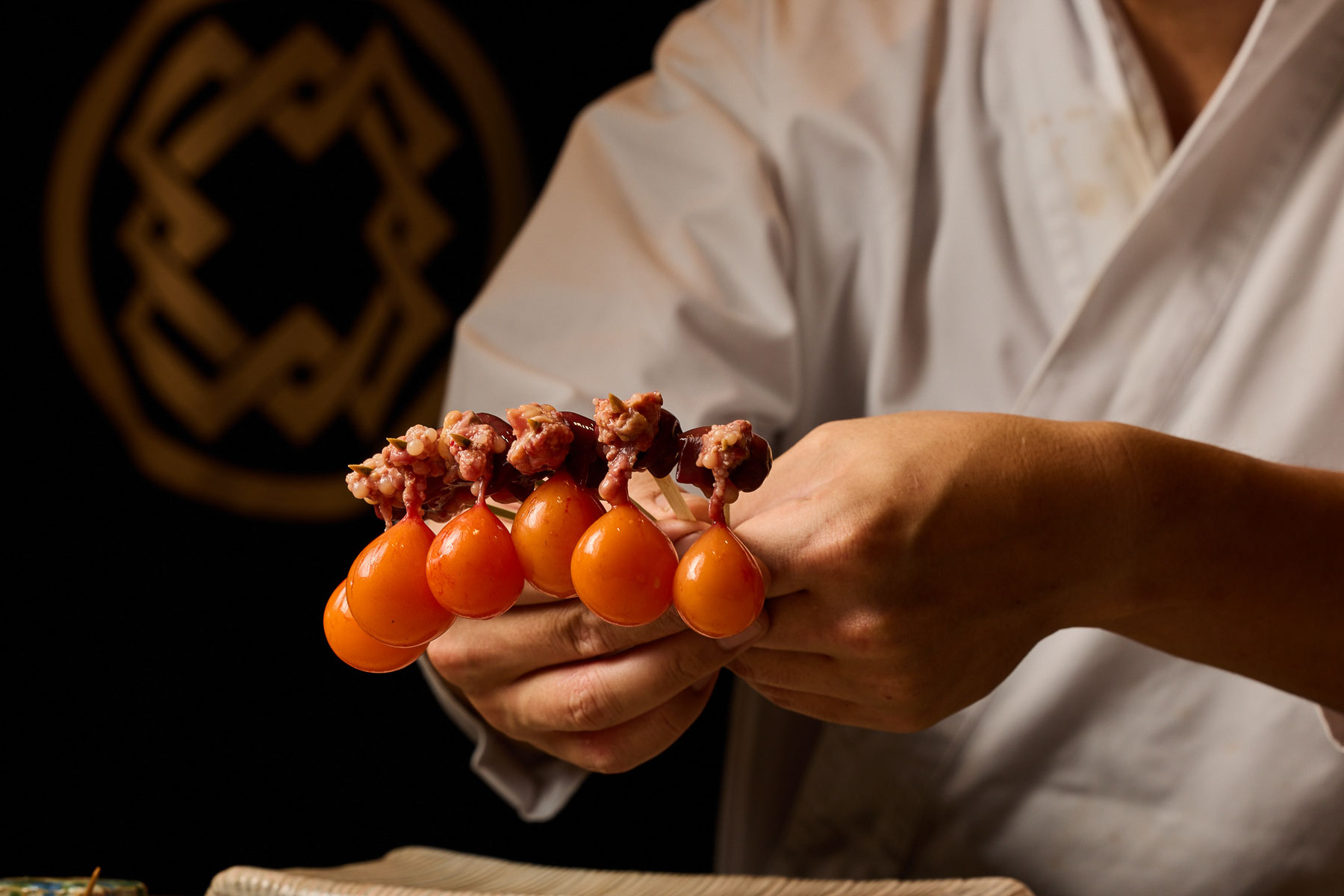
CHEF
Tomoki Hata
SAKE
Torisakiʼs sake menu reflects the same sensibility to craftsmanship as its cuisine. Through his long-standing connection with Aramasa Sake Brewery in Akita, Hata keeps a small but distinctive selection of bottles on hand. Among them are No. 6, the makerʼs main unpasteurized sake, and other limited editions such as Tangerine, Cosmos and Viridian.
Alongside these are several Kyoto-made sakes and around ten seasonal selections that rotate through the year. Pairings are guided by conversation; Hata listens to what guests like and
adjusts accordingly. He has also begun experimenting with white wines, intrigued by how their clean minerality complements the subtle smoke of charcoal-grilled chicken. Itʼs a small gesture of curiosity from a chef who respects tradition but isnʼt bound by it.
Course
- The price includes our booking fee of ¥8,000
- The price includes our booking fee of ¥8,000


